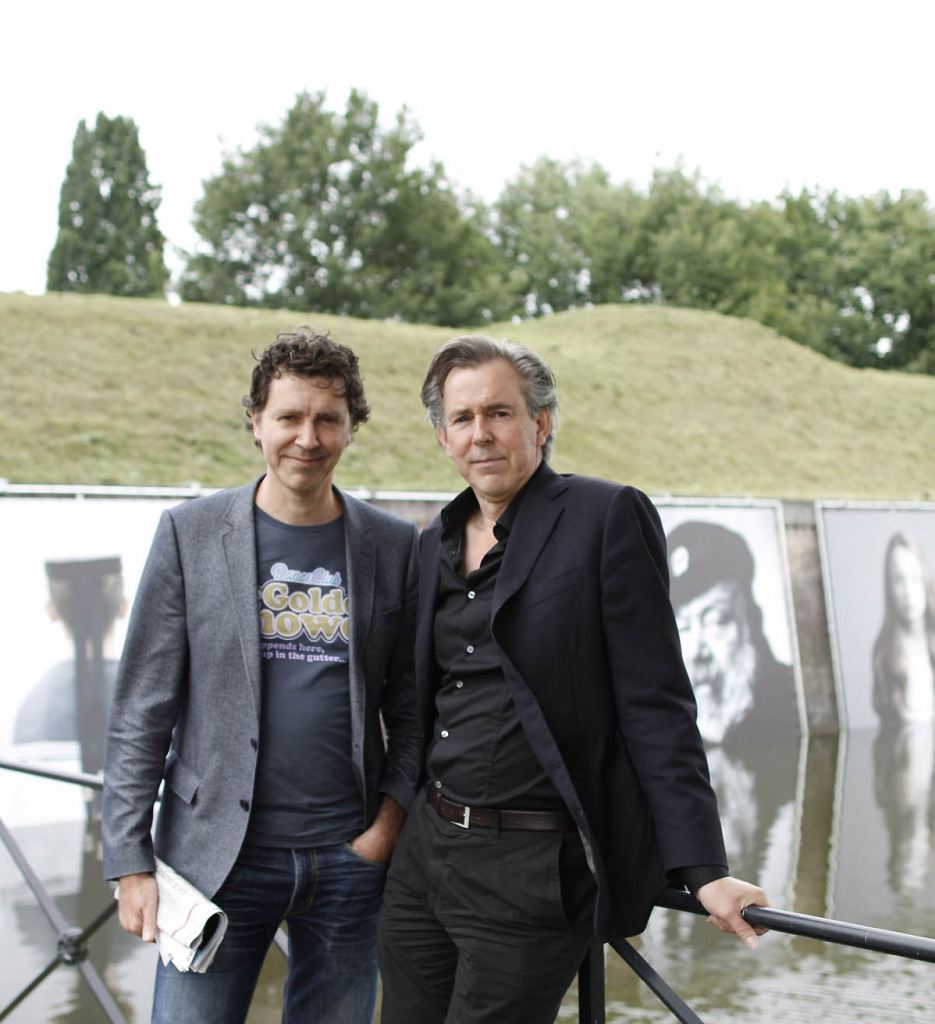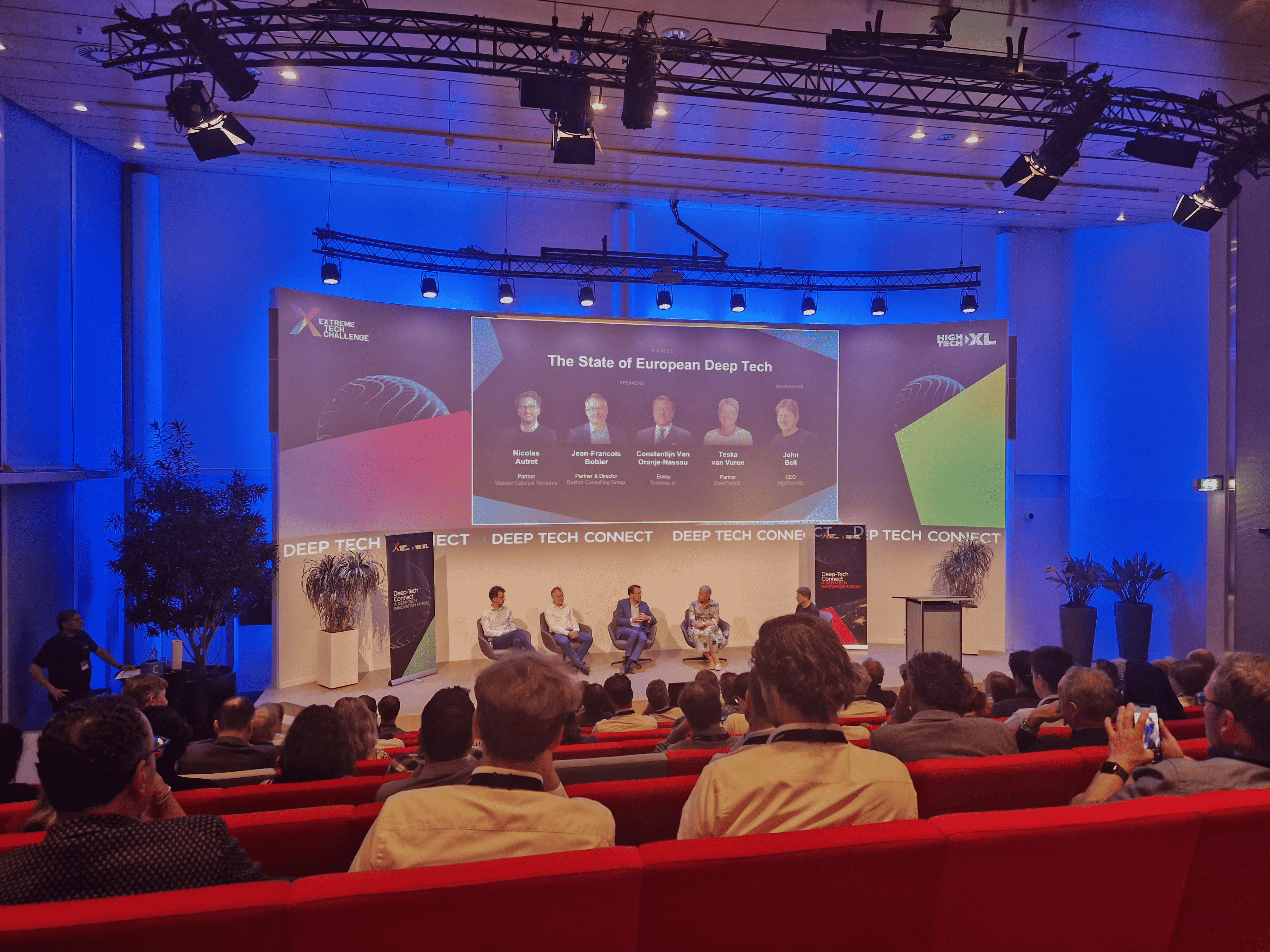
With “The Eindhoven Connection”, Edwin (text) and Norbert (photography) van Onna have delivered a wonderful book at the occasion of all the anniversaries the city is hosting this year. Trudo, the university, Philips, the Evoluon and the library, all of them have a reason to celebrate. Together they gave the Van Onnas the perfect motivation for their great work of art. The impressive black and white photographs, interspersed with essays about the important local topics disclose a clear fundament: the connections that have made Eindhoven to what it is now.
Below is a summary of the introduction to the book, written by Edwin van Onna. The photos are by Norbert van Onna. More information about the book here. Photo above: Left: Edwin van Onna, curator and art historian. Right: Norbert van Onna, architectural photographer and publisher.
Text: Edwin van Onna
For years, Eindhoven has been fuelled by the many technology businesses and the manufacturing industry located in the city and its surroundings. Eindhoven literally and figuratively has a patent on the future. In a region where a new patent is requested every twenty minutes, people are constantly looking ahead.
The success of Eindhoven is partially explained by the fact that civilians, companies, organisations, and the government are working together in an increasingly equal manner in a ‘smart society’.
“There is construction, renovation, transformation, and expansion happening”

Connections make the city. Even though the plans date back to the 1920s, the ring road was not completed until 1966. Its purpose was to connect the surrounding towns, making room for urban expansion, guiding traffic around the city. Considering that in the year of completion only one in ten people owned a car, today there is a huge amount of traffic looking for its way to the city’s invisible ‘eco systems’. Eindhoven likes to think in terms of economic systems as the engine of the city. On both sides of the ring road, there is construction, renovation, transformation, and expansion happening. Living, working, studying, and relaxing are becoming increasingly intertwined.
The need for new workers in a time of limited population growth attracted many migrants, including from Drenthe. This resulted in the ‘Drents Dorp’, a neighbourhood on the other side of the ring road; one of the many byproducts of the ‘Philips welfare state’.
A parallel with the present time presents itself, with the difference that we refer to present-day immigrants as expats. According to Charles Esche, the director of the Van Abbemuseum, the migrant-perspective is extremely informative and this typical Eindhoven history needs to be cherished. Housing corporation Trudo is stimulating the migration of foreign knowledge-workers to the city by creating an appealing habitat for them. Where the old generation of migrants got together in coffee bars and community centres, the present-day expat community has its own ‘living room’. The Hub on the Vestdijk. The community has around four thousand members that meet each other at concerts, quiz nights, and language lessons.
“Connecting people is the real challenge”

Philips is to some extent the source of that typical Eindhoven culture of collaboration, says Hans de Jong, CEO of Philips Benelux. But how can you concretely identify that culture in a time in which everything translates into networks and systems. Perhaps it is best visible in the way public space is being designed. Where in the previous century the emphasis was placed on the separation of living and working in autonomous neighbourhoods, we are now seeing a densified mixture of living, working, studying, and experiencing in the broadest sense of the word. Strijp S is a strong example of this concept of ‘meeting and connecting’; now a second city centre with a strong culture-, technology-, and design-oriented profile. Connecting people is the real challenge, according to Thom Aussems, director of Trudo.
What is special about Eindhoven is that the city is never finished, both literally and figuratively. Eindhoven is flexible, constantly moving, and always under construction. Strijp S is still partially unfinished.
“In an ageing society it is a comforting thought that we can fall back on healthcare robots developed in Eindhoven”

Big plans to transform modernist high-rise construction from the sixties and seventies into housing are already put in motion elsewhere. Soon three hundred students can live in the Potentiaal building in the middle of the TU/e campus, another place where the urban densification is visible. The former offices of the technical department on the Frederik van Eedenstraat and those of Philips Lighting on the Mathildelaan are being transformed into apartments, lofts, and penthouses.
In an ageing society it is a comforting thought that we can fall back on healthcare robots developed in Eindhoven; a shining example of humanised technology. Eindhoven is celebrating the future, but is mostly working on it together. In the smart society, the city belongs to everyone.









